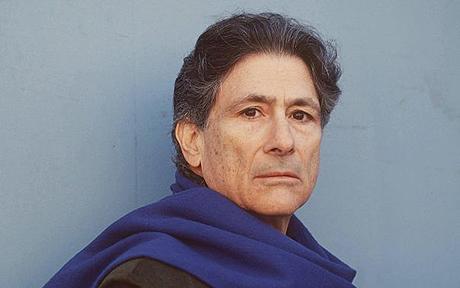Orientalism, a concept which examines the phenomenon of the west being the lens through which the east is analyzed and understood in contemporary western academic, social, artistic and political societies; reaches back to European antiquity with ancient Greece and its representations of Persia in the plays of Aeschylus. There has long been a dissemination of ideas about the east filtered through western predispositions, and the impact and consequences of this have been enormous.
Western positionality towards the east has influenced imagination and has therefor caused a significant level of unconscious perception possessed by those who do not have eastern heritage, in regards to the nature of it. The perception is unconscious because it has been largely absorbed through media, art, education and social influences over time, resulting in the existence of a collective fantasy, dreamed concurrently by a group far removed from the actuality of eastern culture and heritage.

Edward Said, Palestinian Literary Theoretician 1935-2003
Edward Said, a professor of history, comparative literature, and English at Columbia University developed the academic concept of Orientalism in his book by that name, published in 1978. In chapter one, Said writes: “On a visit to Beirut during the terrible civil war of 1975-1976 a French journalist wrote regretfully of the gutted downtown area that ‘it had once seemed to belong to . . . the Orient of Chateaubriand and Nerval.'” Beirut is the capitol of Lebanon. When I first started reading this chapter, I realized that I had been thinking of the East in terms of the Far East, as many Americans tend to, which Said addresses in his book. I was thinking of China and Japan, my mind sort of automatically went there. The term “orient”, I realized, is one I am familiar with, but does not really mean anything in and of itself; it is a construct, and it varies how people envision or think of it. While it does include the far east, this essay focuses on what is now known as the Middle East.
There are so many ways in which Orientalism is pervasive and has manifested in western society, and a major area in which this phenomenon is represented is in French Romanticism. The French journalist quoted by Said in the above passage references “the Orient of Chateaubriand and Nerval.” Francois-Rene de Chateaubriand (1768-1848) was a viscount, or vicomte, which is an aristocratic title. His father was a slave trader, and the family lived in a mansion in Brittany. Chateaubriand is known, among other things, for his novella Rene, published in 1802, a semi-autobiographical work about a melancholy young man who is disillusioned with France and travels to North America to live among Native American tribes there. Supposedly, Chateaubriand lived among the Natchez during his own travels to America, although this has been disputed. It might make sense, due to his propensity to romanticize people of color and look to their cultures as an escape from his own, which he felt disenchanted by.

French Romantic author and editor Francois-Rene de Chateaubriand
Chateaubriand was the editor of the Mercure de France, a magazine with a tradition dating back to the 17th century, and the first western publication to feature fashion. Among its pages were articles tailored to the elite, the elegant and refined, covering the latest in French artistic, literary and intellectual culture, and mentioning the names and activities of high society denizens, not unlike Vogue magazine today, which has its roots in the tradition of the Mercure.
Chateaubriand, as a leading member of the French literary scene, helped to define French Romanticism with writings about his travels to the east, which is what the French journalist in Said’s quote was referring to: “the Beirut of Chateaubriand”; the formularized theoretical enclave that exists only as a concept in collective western imagination, an incidence not started by Chateaubriand, but propelled along by him. What, exactly, is Chateaubriand’s Beirut, and Chateaubriand’s East, and did it ever exist?
France was a leading global colonizer from the 17th to 20th centuries and its territories included the Middle East, South Asia, Southeast Asia, Oceania; east, west, North and equatorial Africa, Antarctica and the Americas. During these centuries in the west, France was a leader in art and culture. Part of this colonial oppression was the extraction of certain cultural elements from what was for centuries known as the Orient; the countries of Asia, which were then reconfigured by Imperialist powers.
One way to understand the concept of Orientalism is to look at art from the era of Chateaubriand. A common theme is the Odalisque, based on the Turkish word for chambermaid, which under western interpretation became synonymous with a concubine or harem woman. Almost always a fair-skinned white woman, the Odalisque is represented reclining and presented as sexually available, an image constructed to invoke desire. The superimposing of the white, submissive, sexualized female body upon a scene effulgent with eastern architecture, the ubiquitous hookah, and the ever-present slave in the background, waiting to attend to any need the viewer may have, is representative of the superimposition of western values upon the east as a whole. The replacement of cultural values local to the region with sexual fantasies of white women and dark-skinned slaves, the creation of the Orient as a place where forbidden, hedonistic desires, free from the confines of Christianity, can become real, has nothing to do with what the countries of the east are really about. It is merely a fantasy created to serve the needs of those in power. This fantasy is not just represented in art, but in all spheres of interaction from west to east during the era of Chateaubriand and continues today.

Jean-Auguste-Dominique Ingres Odalisque with Slave, 1842

Grande Odalisque also by Ingres, 1814
Romanticization of the east continues, an historical thread that has wound its way through centuries and continues to manifest in contemporary western fetishization of eastern cultures. Another aspect to this of course, is war and violence.
While fantasies of the east may serve to support and fulfill western desires to feel cultured, empowered and sexually titillated, the supremacy inherent to these feelings has also culminated in another fantasy of the east that fulfills western ambitions: a Middle East, as this part of the world is now called, full of religious extremists who must be subdued by war and the imposition of neoliberal values.

While eastern cultures serve to satisfy romantic notions, they ultimately must stick to that, as the only other role the Middle East can occupy in regnant western consciousness is a desert full of machine gun toting radicals who want to destroy everything that is beautiful, particularly western culture. Orientalism continues today with the denigration of Muslims and Muslim Americans, painted in yet another type of collective picture as threatening and malicious, without any culture that is of value; stone-age people who only seek to destroy and oppress. In order to maintain western neoliberal supremacy, to continue to exalt it and prove that it truly is ideal, to continue the dream that it really works, that it is so valuable others must be murdered in mass numbers in other countries, these fantasies must remain in place. Because any usurpation of such fantasies threatens not western democracy, but western racist and sexist supremacies.

Theoretical Infographic by Kate Pollack (c) 2016, based on Said’s Orientalism. Image must be used with permission. All rights reserved.